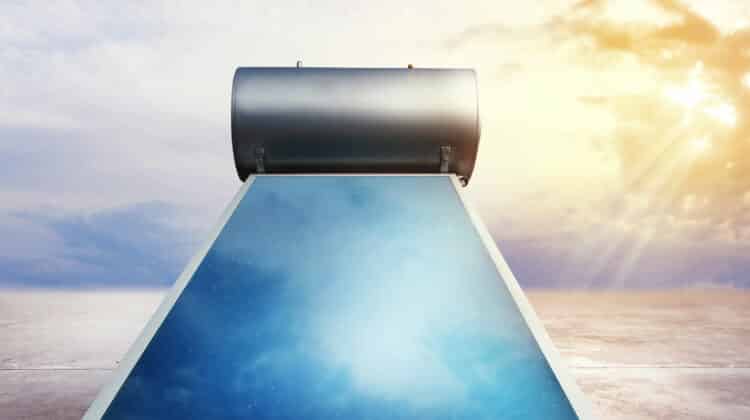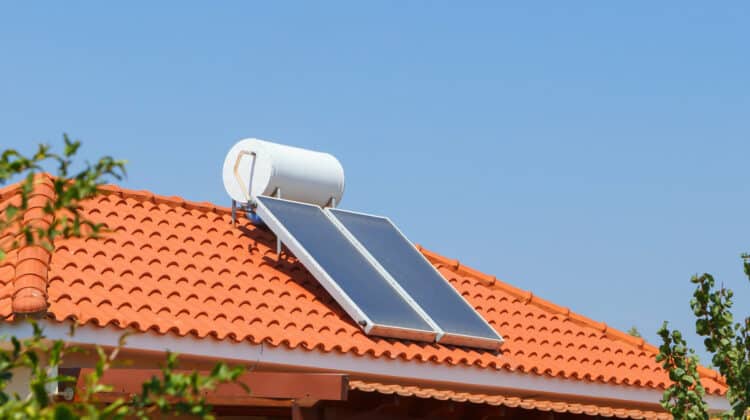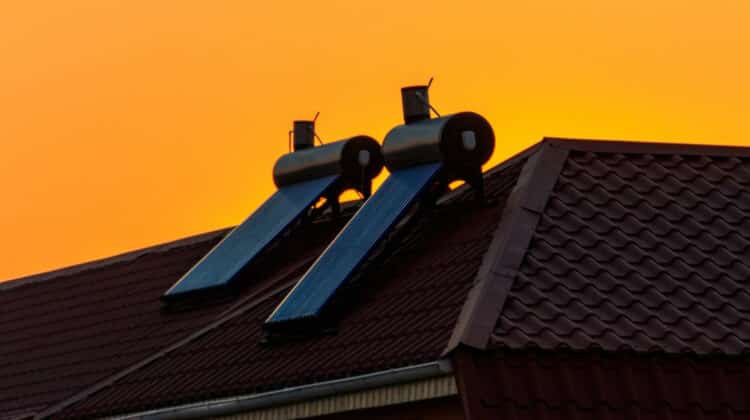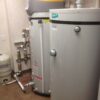Have you ever asked yourself does solar water heater work in night conditions? To make the long story short: yes, it does.
Water heaters, especially solar-powered ones, have solar panels to catch the sunlight. Then it utilizes them to transform itself into a device to make water hot.
On cloudy days without any sun or at night, these water heaters have backup battery units to keep the water hot. Some, instead of batteries, use gas or electricity as their backup systems.
And this is mainly the way how water remains hot during days without sunlight.
Table of Contents
Why does a solar water heater need a backup system?
Ideally, you would not need a backup unit if there is an excess of sunlight. The solar water heater has a well-insulated tank, which prevents the water from cooling down before usage.
The purpose of the backup system is to provide supplemental heat to keep the water at just the right temperature.
This way, you will save seventy to ninety percent of your water heating bill.
How long does it take for a solar water heater to make water hot?
A solar water heater will take five to six hours to heat the entire tank in regular sunlight.
Can a solar water heater become too hot?
Regular households always need hot water for drinking, bathing, etc. Due to this constant demand, the temperature for the heated water can go as high as two hundred eighty degrees Celsius.
Does a solar water heater require electricity to work?
A typical solar water heater does need electricity to function. As mentioned, electricity is only used as a backup system for long days without sunlight.
How does a solar water heater work during long days without the sun?
A solar heater will still work during cloudy or rainy days or even during the monsoon season. It will generate hot water by diffusing radiation in the atmosphere.
Does a solar water heater work in winter?
A solar water heater can still function in winter but does not generate much hot water. You will need to install freeze protection so the snow in the collector will melt before sliding off the roof.
A solar water heater can still be effective in winter due to proper insulation, and when sunlight is lacking, it can still use radiation fluid technology.
How does radiation fluid technology work in a solar water heater?
In the radiation fluid technology system, there is a liquid catalyst (in this case, a radiator fluid) that is warmed by the energy of the sun and is pumped into the heat exchange tank.
In the heat exchange tank, there is an exchange of heat between the fluid and water, thus warming it. The radiator fluid must be checked before the start of the winter season to make sure of proper healing.
How do solar water heaters function?
The entire solar water heating system is not difficult to comprehend. However, it is available in many designs that include collectors and water tanks.
How they work will depend on their individual collectors and circulation systems.
Types of solar water heater collectors
Batch collector
A batch collector is also called ICS or Integrated Collector Storage. It works by heating water in tubes or dark tanks in an insulated box and storing it until drawn.
Water will stay in the collector for a long time if there is a low demand for hot water in the household, thus making it extremely hot. There is a temperature valve that mixes cold water to lower the temperature before it is drawn out.
A batch collector will not function with a Closed Loop Circulation system, thus not advisable for cold weather climates.
Flat plate collector
A flat plate collector has a copper tube that connects to a flat absorber plate. It is set up with parallel tubes fitted at each end by two pipes, which are the outlet and inlet manifolds.
The flat plate is in the insulated box, with a tempered glass cover.
A typical flat-plate collector is designed to contain forty gallons of water. Two of these collectors can provide one-half of the water necessary for a family of four.
Evacuated tube collector
An evacuated tube collector is regarded as the most efficient available in the market today. It has the same functionality as a thermos, wherein a metal or glass tube containing water is encapsulated by a bigger glass tube. There is a vacuum between them, and little heat can escape.
An evacuated tube collector can function on cloudy days and still work in as low as forty degrees Fahrenheit temperature.
Types of solar water heater circulation systems
Direct circulation system
A direct circulation system works by circulating water via a solar collector wherein the sun proceeds to heat it. The heated water is either used directly, delivered to a tankless water heater, or stored in the tank.
The direct circulation system is mostly utilized in non-freezing climates.
Closed loop circulation system
A closed-loop circulation system is also called the indirect system, wherein it utilizes a non-freezing liquid for transferring the sun’s heat to the water in the tank.
Solar energy heats the liquid in the solar collector and passes through the heat exchanger in the tank, thus transferring the heat to the water. Then the non-freezing fluid will cycle back to the collector.
A closed-looped circulation system is practicable in freezing weather conditions.
Active circulation system
An active circulation system is also called forced circulation, whereon electric pumps, controllers, and valves are utilized to deliver water to the storage tank.
An active circulation water tank is mostly used in households in the U.S.A.
Passive circulation system
A passive circulation system does not need a pump move water from the collector to the storage as it heats, while natural convection is us utilized.
What are the common ways that a solar water heater malfunctions?
- Solar panel malfunction
- Water tank malfunction
- Failure of solar water heater valves
- Inlet pressure failure
Why does a solar water heater sometimes not be hot enough?
This condition directly relates to the climate, wherein less sunlight in the sky will lessen the ability of the solar panels in properly converting sunlight to thermal energy.
Another cause is that the individual solar panels are not positioned on the roof the right way.
When will a solar water heater switch on?
DC or direct current pumps will automatically switch on when the solar panels generate enough power to cause the pump to operate.
When properly sized, liquid in the panels will be hot enough to transfer heat whenever the pump has enough power to function.
Where will hot water come from in a solar water heater?
Once you open the hot water valve, the hot water in the batch collector on the roof will flow down to the faucets. These are made to contain forty gallons of water.
There are passive circulation systems that include tankless heaters as backup energy sources, which can be either electric or gas.
How will you know if the solar panels are correctly generating heat for the solar water heater?
You will need a professional to assess if the solar panels are malfunctioning, has to be replaced, or moved to a different part of the roof.
The solar panels need to function in maximum capacity to heat water at the highest temperature. They should work not less than eighty percent capacity after twenty years.
What is the price of a typical solar water heater?
There are smaller passive solar water heaters that cost about three thousand dollars, and bigger active solar water heaters can go as high as ten thousand dollars.
How long will a solar water heater last?
Gas and electric water heaters will typically last for at most ten years.
While a typical solar water heater will last about twenty years. A family of four can save four to six thousand dollars throughout its lifetime.
Does a solar water heater work in night or any other day without the heat of the sun?
The amazing thing with solar water heaters is that they can still work during cloudy days, nighttime, or even winter. It is a great investment for families looking to save on electricity costs and still get hot water.





